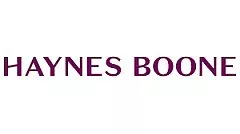- within Tax topic(s)
On March 21, 2022, the Securities and Exchange Commission (the “Commission”) proposed its long-anticipated climate-related disclosure rules that would require public companies to make disclosures of greenhouse gas (“GHG”) emissions and climate-related risks that are reasonably likely to have a material impact on their business, results of operations or financial condition in their registration statements and annual reports. Public companies currently disclose varying degrees of climate-related information utilizing disclosure frameworks developed by standard-setters, investor demands and other groups. In response to climate-related attention and investor focus, the Commission has proposed The Enhancement and Standardization of Climate-Related Disclosures for Investors (the “Proposed Rules”), which would require public companies to provide disclosures on a “common set of qualitative and quantitative climate-related disclosure topics in their filings” to provide “consistent, comparable, and reliable—and therefore decision-useful—information to investors to enable them to make informed judgments about the impact of climate-related risks on current and potential investments.”
In an effort to standardize the methodologies companies apply in disclosing climate-related information, the Proposed Rules incorporate certain concepts and vocabulary of the climate-related reporting framework established by the Task Force on Climate-Related Financial Disclosures (“TCFD”) and the accounting and reporting standards for GHG emissions in accordance with the Greenhouse Gas Protocol (“GHG Protocol”). Under the Proposed Rules, public companies would be required to disclose emissions that occur from the sources owned or controlled by the company (Scope 1) and emissions resulting from the generation of electricity (or other sources of power) purchased and consumed by the company (Scope 2) and, in certain circumstances, all other indirect emissions in the company's value chain, upstream and downstream (Scope 3). The Proposed Rules would require companies to disclose Scope 1 and Scope 2 emissions for their most recently completed fiscal year (along with GHG emissions for the historical fiscal years included in consolidated financial statements), together with a description of the methodologies, significant inputs and significant assumptions used to calculate such emissions. Given that public companies and investors have gravitated towards the TCFD framework and the GHG Protocol, the Commission sought to incorporate many of their concepts and vocabulary into the Proposed Rules to mitigate the compliance burden for companies and reduce the burdens encountered by investors in analyzing and comparing disclosures.
The Commission has proposed to add (1) a new Subpart 1500 to Regulation S-K that would require a company to disclose certain climate-related information and GHG emissions metrics that could help investors assess the climate-related risks and (2) a new Article 14 to Regulation S-X that would require certain climate-related financial statement metrics and related disclosure to be included in a note to a company's audited financial statements. The new Subpart 1500 and Article 14 would require five general categories of disclosure:
- Climate-related risks and impacts on the registrant's business, strategy and outlook;
- Governance of climate-related risks and relevant risk management processes;
- GHG emissions metrics;
- Scope 1 and Scope 2 emissions, separately disclosed, in
absolute terms, irrespective of materiality:
- disaggregated by constituent greenhouse gases and in the aggregate; and
- in terms of intensity by reference to revenue and production unit;
- Scope 3 emissions and intensity, if material, or if the company has set a reduction target or goal that includes Scope 3 emissions;
- Scope 1 and Scope 2 emissions, separately disclosed, in
absolute terms, irrespective of materiality:
- Climate-related financial statement metrics and related footnote disclosures in the registrant's audited financial statements; and
- Climate-related targets and goals, and transition plan, if any.
The Proposed Rules would require accelerated filers and large accelerated filers to include an attestation report with respect to Scope 1 and Scope 2 emissions disclosures. During the transition period, companies would be required to obtain an attestation report at a “limited assurance” level. Following the transition period, the attestation report must be provided at the “reasonable assurance” level, the same assurance level required with respect to the audited financial statements.
Notably, there are certain accommodations provided under the Proposed Rules. First, there is a scaled phase-in schedule for the disclosure requirements based on filer status and scope of emissions, with Scope 1 and Scope 2 first. Second, with respect to reporting of Scope 3 emissions, the Proposed Rules include an additional year of phase-in period, a “good faith” safe harbor from liability and a general exemption for smaller reporting companies. Nonetheless, if the Proposed Rules become final in their current form, many companies will face increased compliance costs (e.g., attestation reports), heightened potential liability exposure and meaningful changes in oversight.
Public Comments must be delivered to the Commission on or before the later of thirty days after the date of publication in the Federal Register and May 20, 2022.
To view the full article, please click here.
The content of this article is intended to provide a general guide to the subject matter. Specialist advice should be sought about your specific circumstances.






